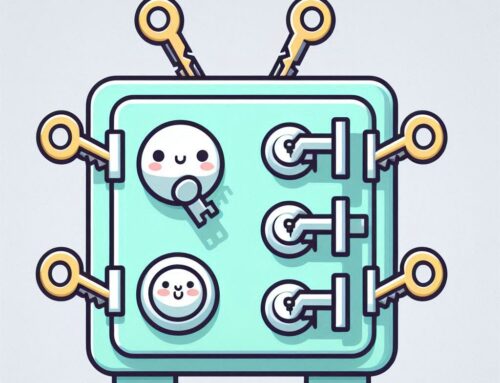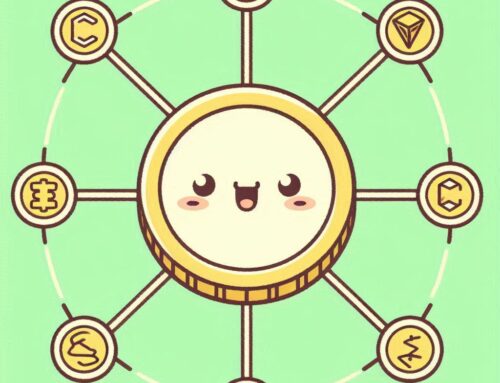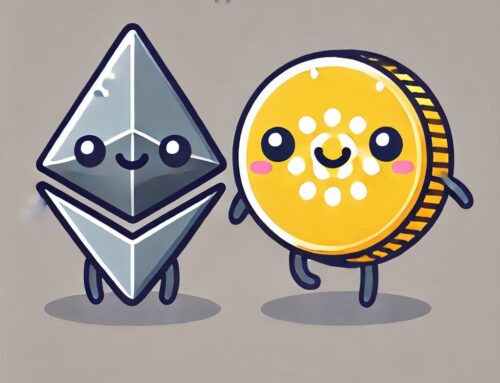Beyond LEGOs: A Construction Guide to Cardano Blocks (Building the Blockchain, One Block at a Time!)
Alright, let’s huddle up and chat about Cardano blocks. No, we’re not talking about those colorful plastic bricks you played with as a kid (though wouldn’t it be cool if you could build a blockchain out of LEGOs?). We’re talking about the digital kind that form the very foundation of the Cardano blockchain!
Think of them like the individual pages of a highly secure and transparent digital ledger, where all the magic and mayhem of the Cardano network are meticulously recorded. Each Cardano block is a snapshot of a specific moment in time, forever etched into the digital record. So, let’s embark on a deep exploration of the structure and function of Cardano blocks, transforming you from a curious observer into a blockchain construction guru!
Blocks: The Foundation of Every Blockchain (Not Just a Random Pile of Data!)
Before we get into the nitty-gritty details of Cardano blocks, let’s quickly revisit why blocks are so darn important in the first place. In a blockchain, all data – from simple transactions to complex smart contract executions – is stored in blocks. These blocks are linked together chronologically, forming an immutable chain, which gives blockchain technology its name. Think of it like a digital story, where each chapter depends on all the previous chapters.
-
Chain of Blocks (Like a Never-Ending Story!): Each block contains a reference to the previous block which create a continuous chain that’s incredibly difficult to tamper with. It’s like a digital breadcrumb trail that leads back to the very beginning of the blockchain, making it easy to verify the integrity of the entire system. This chain of blocks is a core element of blockchain technology, as it is what makes it so tamper-proof.
-
Immutability (Set in Digital Stone!): Once a block is added to the blockchain, it becomes virtually impossible to alter or delete it. This immutability is a key feature of blockchain technology and ensures that the ledger remains accurate and reliable over time. It’s like writing in a digital stone tablet that can never be erased. This feature is important for building trustworthy systems.
The Structure of a Cardano Block: What’s Inside This Digital Container?
A Cardano block isn’t just a random jumble of ones and zeros; it’s a carefully structured digital container, with each component meticulously designed to serve a specific purpose. Think of it like a perfectly organized digital suitcase, where everything has its designated place. Here’s a breakdown of the key elements that make up a Cardano block:
-
Block Header (The Block’s ID Card!): This is the block’s “identification tag”, containing essential metadata about the block itself, such as the hash of the previous block, which helps keep the chain intact. It’s like the cover page of a book, providing essential information that allows you to understand the basic details about the contents inside. The block header is essential for ensuring security.
-
Block Number or Height (The Position in the Chain!): A unique identifier indicating the block’s position in the chain. It’s like the page number in a book, showing where the block belongs in the sequence.
-
Hash of the Previous Block (The Chain Link!): A cryptographic fingerprint of the previous block, linking it to the current block and maintaining the chain’s integrity. It’s like a lock that chains two dominoes together, where each domino relies on the previous one for support.
-
Merkle Root (A Summary of the Contents!): A cryptographic summary of all the transactions included in the block, providing a compact way to verify the integrity of the data. It’s like a table of contents for all the transactions in the block, allowing users to see a summary of the data.
-
Timestamp (Marking the Moment in Time!): A record of when the block was created. It’s like a date stamp, recording when the block was added to the chain, ensuring that everyone can verify when the data was added to the blockchain.
-
Block Producer Signature (Proving Who Built It!): A digital signature proving that the block was created by a legitimate slot leader. It’s like a signature confirming the author of a book, or verifying the validity of the data.
-
Slot Number (The Time Slot!): Identifies the specific slot in which the block was created within an epoch, marking its place in the schedule.
-
-
Transaction Data (The Heart of the Block!): This is the core of the Cardano block, containing all the transactions that are included within the block. It’s like the main content of a book, providing all the important details. Without this data, the blocks would have no reason to exist.
-
List of Transactions (What Happened in This Block!): The actual data of all the transactions being recorded, including the senders, receivers, and the amounts transferred. It’s like recording all the interactions that happened in the given timeframe, which is an essential function of a Cardano block.
-
-
Metadata (The Extra Information!): This section contains any additional information that is not part of the block header or transaction data, adding clarity and versatility to the network. This could include things like protocol updates or smart contract execution data. It’s like having footnotes to add clarification and context to the main content, without cluttering up the key details of the Cardano block.
The Function of a Cardano Block: From Transaction to Blockchain
Now that we understand all of the various components, let’s delve into what the function of the Cardano blocks are, and how they are utilized within the broader network:
-
Transaction Collection (Gathering the Orders!): When users initiate transactions, these are broadcast to the network. Nodes on the network gather these pending transactions and add them to a transaction pool, getting ready for the next stage of the process. It’s like gathering all the orders that need to be processed.
-
Block Creation (Building the Container!): A slot leader is randomly selected, based on their stake. The slot leader selects the transactions from the transaction pool and packages them into a new block along with a timestamp, the hash of the previous block, and other data. This process is a crucial part of the Ouroboros consensus mechanism. It’s like a designated driver assembling the passengers for a ride.
-
Block Validation (Checking the Work!): The other nodes on the network validate the block by verifying the transactions and the block header, checking to make sure that it is properly formatted and in compliance with the network’s rules. It’s like a security check to make sure everything is correct and legitimate.
-
Block Addition (Adding it to the Record!): Once the block is validated, it’s added to the blockchain, making it a permanent record, that can’t be changed. It’s like adding a new page to the ledger, solidifying its place in history.
-
Chain Extension (Building a Lasting Structure!): The process repeats, with new blocks constantly being added to the blockchain, extending the chain and making the network more secure. It’s like building a never-ending road, one block at a time, with each component relying on the solid foundation of the previous block.
The Importance of Each Component: A Symphony of Elements Working Together
Each component of a Cardano block plays a critical role in the proper functioning of the network. These elements are crucial to the stability and reliability of the network.
-
Block Header (Keeping it All Together!): The header ensures that blocks are linked together correctly and that the chain is tamper-proof, which provides reliability and trust for all the users of Cardano. It’s like having a system to check whether each page of a book is in the correct order.
-
Transaction Data (Making it Meaningful!): Transaction data provides a record of all transactions that occurred in a specific period, ensuring that everyone agrees on the state of the ledger. It’s like keeping a record of every transaction in a bank, which allows for verification, and traceability.
-
Metadata (Adding Versatility and Detail!): Metadata offers additional insights and flexibility for the network, allowing for protocol updates and smart contract execution. It’s like having footnotes to add clarification and context to the main content, giving users more information.
The Takeaway: Cardano Blocks Are the Foundation of a Robust and Secure Ecosystem!
Cardano blocks are the fundamental building blocks of the Cardano blockchain. They are carefully structured containers that hold transactions and other important data. By understanding the components of a block, and how they work, you can gain deep insights into the security and reliability of the Cardano network. Each part of a block has a specific function, and when combined, they ensure that the network operates seamlessly and securely. So, the next time you hear about the blockchain, remember that it’s all about these little Cardano blocks and all the crucial data they hold!





